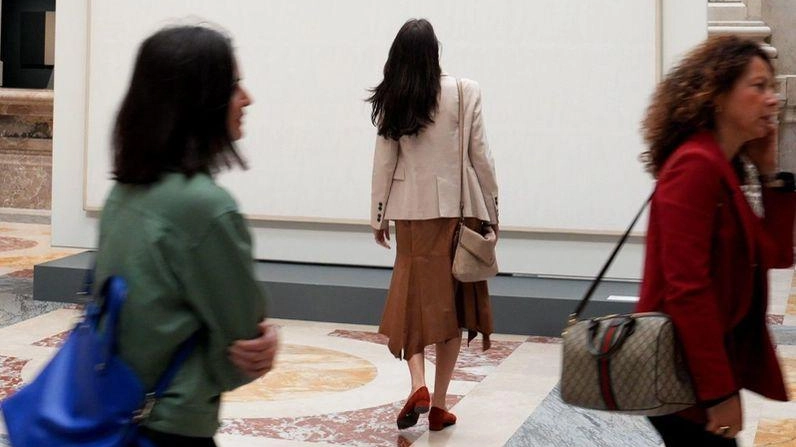Agrati Collection, Treasures at the Galleries. Fontana, Paolini and Rauschenberg

May 30, 2025

A rich journey through a generation of artists from both sides of the ocean who open up new scenarios
Finally Rauschenberg! It is a must to rejoice because after having mentioned him for months and after the disappointment (however interesting) of the eight works shown at the Museo del '900, this time there is the first real exhibition that explains all his power as an innovator, using the language of composition and graphics. Seventeen works that emerge from the wonderful Luigi and Peppino Agrati Collection so jealously guarded (so far two exhibitions in 2018 and 2023) by IntesaSanPaolo. Thus, the exhibition “An unexpected collection. The new Art of the Sixties and a Tribute to Robert Rauschenberger“ opens under the best auspices (until October 5), curated by Luca Massimo Barbero, which offers an unprecedented itinerary on the contemporary art of the Sixties between the two sides of the ocean. Because not only is the great Rauschenberg being talked about (on the centenary of his birth) but the exhibition brings together for the first time over 60 works by great Italian and American artists. The names: from Yves Klein to Lucio Fontana and Piero Manzoni up to the rare works, rarely seen before, by Giulio Paolini, by Robert Ryman (with a monochrome) and a youthful and surprising lead work by Richard Serra.
The heart of the exhibition is the Salone Scala entirely dedicated to Rauschenberg, an opportunity to also celebrate the great friendship with Peppino Agrati, a friend and collector among the first in Italy, and, consequently, the relationship of the American artist with the Belpaese. It starts with the masterpiece Blue Exit of 1961, and continues with the famous Combine Paintings, works that blend painting, found objects, common materials (his trip to Naples and Rome in the early 1950s was the trigger for the suggestions that would derive from it) but which in 1974 become "almost shrouds of memory", suggests Barbero. Works that enclose the experiences of his numerous trips (for example to Israel), "suggestions that he recomposes on these sheets, fragile and very poetic works". And we go all the way to the graphics, a series of ten plates that brightened up the Agrati house (R. loved to sell them at a very political, low price), Opal Gospel 1971, which as the curator Luca Barbero says "best tell the poetics of Rauschenberg, we talk about birth, about mother earth and these writings, real poems, reveal an unpublished Rauschenberg, more poetic and profound, more conceptual".
The dialogue between minimalism and monochrome continues with the works of Carl Andre, a protagonist of American minimalist sculpture, flanked by two important works by Robert Mangold, rarely seen in European collections, alongside two works by Enrico Castellani, White Surface (Homage to Dawn) and White Surface. Diptych. The Agrati Collection offers other wonders: the three series of ten original silkscreens by Andy Warhol, Marilyn, Electric Chairs and Mao Tse-Tung.
Robert Ryman's monochrome (Surface Veil) stands out. The last two rooms of the museum exhibit refined works by Roy Lichtenstein, among which Mirror, from 1970 and Brushstroke from 1965 could not be missed.
Il Giorno




